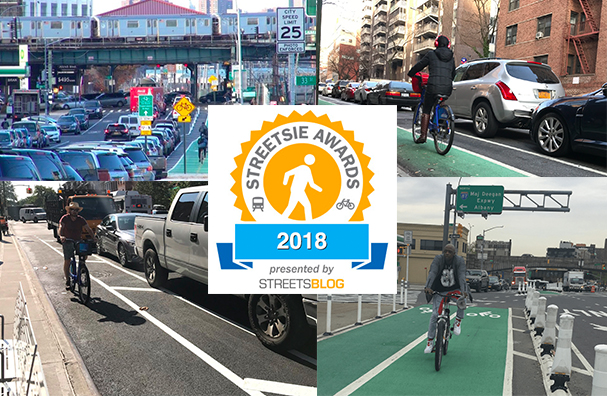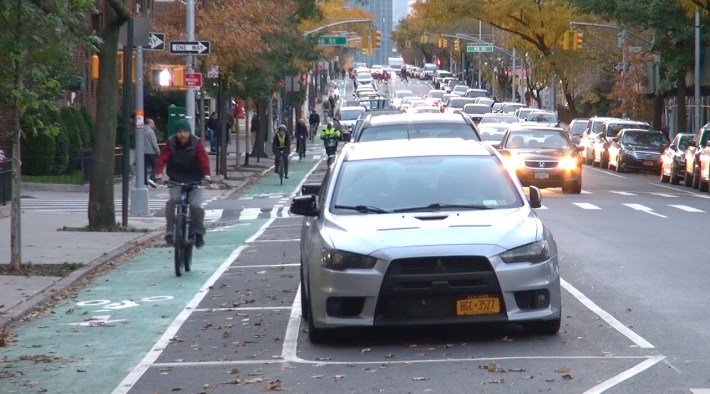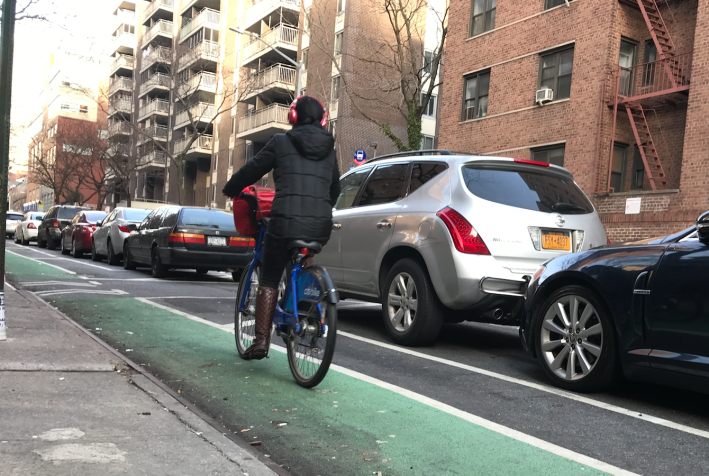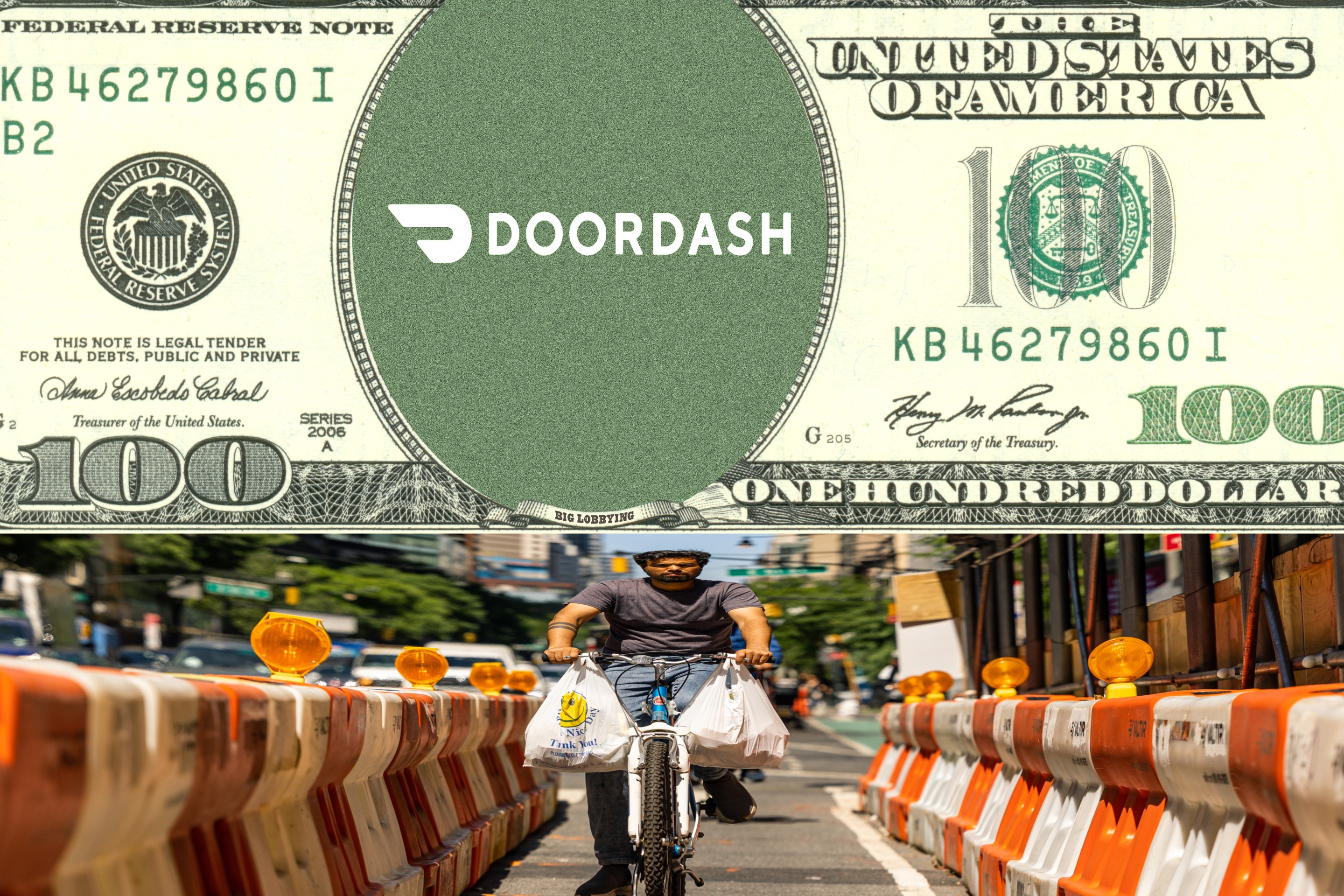Street redesigns: they're where the magic happens.
All told, DOT installed around 16 miles of genuinely protected bike lanes this year, along with pedestrian safety upgrades across the city.
Of course, city government must do more. Midtown Manhattan — quite literally the city's heart — remains almost entirely devoid of bike lanes between Eighth Avenue and Second Avenue. And many of the city's supposed protected bike lanes don't actually have physical protection from motorists, as Streetsblog recently revealed.
City Council Transportation Committee Chairman Ydanis Rodriguez has called on DOT to increase its annual haul of protected bike lanes to 100 miles per year. That will require a lot more funding, for which Rodriguez has vowed to fight. For years, DOT Commissioner Polly Trottenberg has declined calls for increased bike lane funding, arguing that the agency's current load is all it can handle.
But the DOT operational toolkit is extraordinary: For relatively little money, the agency can quickly transform any street or intersection, making it safer for all users. And that's exactly what protected bike lanes have proven to do, as the agency's data has shown.
Here are the nominees for street redesign of the year. Scroll down to see the winner:
Skillman and 43rd avenues (Sunnyside and Woodside, Queens)
Months of controversy and community debate aside, the protected bike lanes on Skillman and 43rd avenues are phenomenal. They’re wide, yes — and they also provided essential traffic-calming and pedestrian safety improvements.
Most importantly, however, they closed a key gap in the Queens protected bike lane bike network, which the de Blasio administration has worked hard beef up since 2014. Up until this year, a huge hole remained between the western terminus of the Queens Boulevard bike lanes and Long Island City. Cyclists had determined that Skillman and 43rd avenue were the safest route to get there. After a cyclist was killed biking home from work at 43rd Avenue and 39th Street, it was clear something had to be done.
As of this year, you can now ride in safe bike lanes from Rego Park all the way to Manhattan.
Manhattan Crosstown Bike Lanes
In response to pressure from advocates and City Council Transportation Committee Chairman Ydanis Rodriguez, DOT installed crosstown protected bike lanes in Manhattan this year on 26th Street and 29th Street, as well as 12th Street and 13th Street, which were already slated for improvements ahead of April’s L train shutdown.
All told, the lanes are far too narrow to carry large amounts of cyclists. And huge chunks of them aren’t actually protected. Still, DOT deserves credit for beginning to tackle one of the major gaps in the city’s bike lane network.
Ninth Street Protected Bike Lane (Park Slope, Brooklyn)
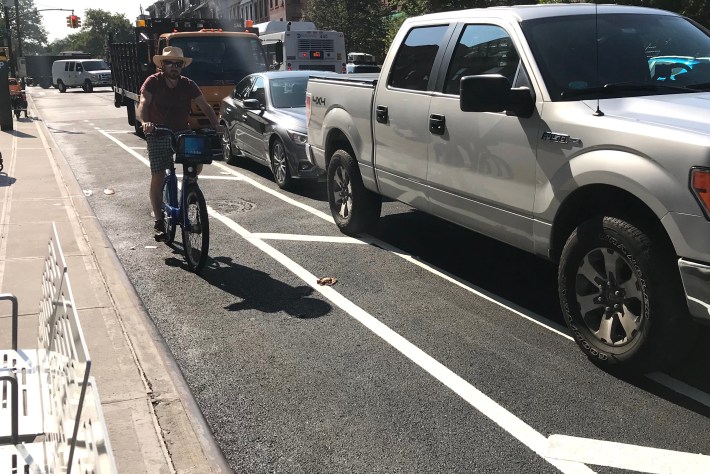
This protected bike lane in Park Slope was notable for the rapid speed with which DOT committed to installing it in response to tragedy. Trottenberg announced the project just two days after Dorothy Bruns ran over and killed two children at Ninth Street and Fifth Avenue. The city installed it — and state-of-the-art intersection designs — in July.
Park Row Protected Bike Lane (Lower Manhattan)
This project, which DOT announced in 2017, went in during the spring of this year. This stretch of Park Row runs behind NYPD headquarters and had been an inhospitable security zone since 9/11. DOT’s redesign transformed it — adding protected bike lanes, wider painted sidewalks to provide a safe and direct cycling link to Lower Manhattan and the Brooklyn Bridge.
THE #ParkRow #bikeNYC LANE SEEMS TO BE OPEN!! pic.twitter.com/uN5mublK4F
— noel hidalgo • 🗽❤️🔥🚲 (@noneck) June 18, 2018
Fountain and Seaview Avenues (East New York)
Sadly, Streetsblog missed this project when it was announced and installed earlier this year, but it’s worth noting: In East New York, far from the city’s loudest advocates and DOT’s biggest controversies, the agency laid out a few miles of bike lanes to Fountain Park [PDF]. Most of those bike lanes, on Fountain and Seaview avenues, were protected. The redesign also included bus stop upgrades:
This month, we'll be looking back at many of our projects from 2018. Follow along at #nycdot2018.
— NYC DOT (@NYC_DOT) December 3, 2018
First up: Seaview Ave at E 108 St in #Brooklyn, which added a bus boarding island, an accessible place for B17 riders, a reconstructed median & more visible crossings. #VisionZero pic.twitter.com/Nf1BNuhxuf
138th Street in the Bronx
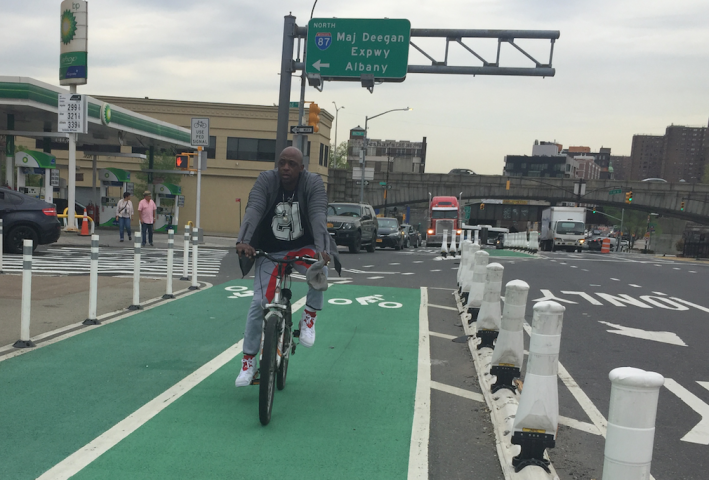
These protected bike lanes — which lead to and from the Madison Avenue Bridge — were proposed in 2017, but only installed this year. The redesign serves as the model for DOT’s plans to improve connections to all 12 Harlem River bridges, which it released this year.
Seventh Avenue sidewalk extension (Midtown Manhattan)
The pedestrian squeeze in Midtown is real, as Streetsblog publisher Mark Gorton and Streetfilms’ Clarence Eckerson documented in this video from May:
Fortunately, DOT took some small steps to fix that this year, painting sidewalk extensions on Seventh Avenue between 34th Street and 42nd Street.
Flatbush & Atlantic Pedestrian Improvements (Brooklyn)
Sitting atop Atlantic Terminal, the intersection of Flatbush and Atlantic is the crossroads of Brooklyn. It’s also a pedestrian’s nightmare, and the sight of multiple fatal crashes in the last few years.
Ultimately, the intersection won’t truly be safe until the city actually prioritizes pedestrian and cyclists above Brooklyn’s busiest transit hub. That means thinking creatively — and being willing to sacrifice car speeds in the process. For now, the new concrete medians DOT installed this year will have to do.
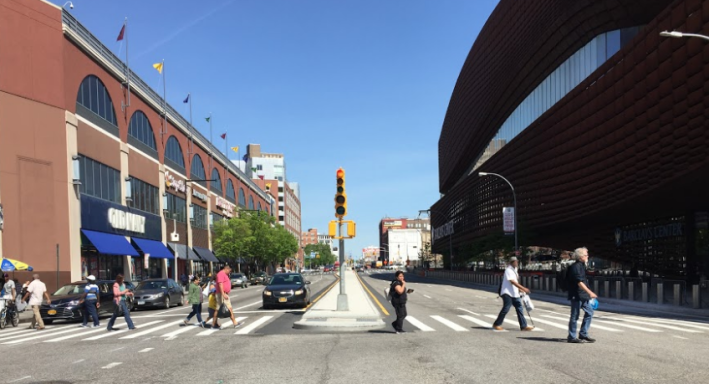
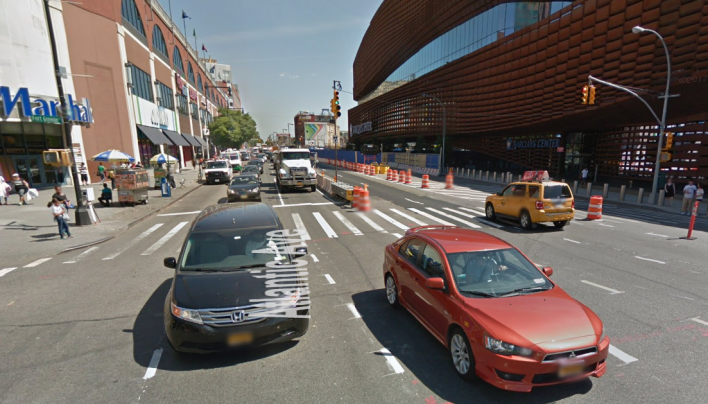
Delancey Street and the entire L train bike network
Delancey Street was the first protected bike lane that DOT announced would be installed as part of its L train shutdown mitigation plans. The agency's redesign, which went in this year, put a barrier-protected two-way bike lane along the median. Of course, as Streetsblog's Gersh Kuntzman pointed out, the project had some key shortcomings — most notably a bizarre concrete island at Allen Street that initially became a magnet for idling traffic until DOT fixed it.
DOT also rolled out a handful of protected bike lanes on the Brooklyn side of the shutdown, including on Knickerbocker Avenue, shown here:
Our next #nycdot2018 project includes a parking protected #bikenyc lane along Knickerbocker Ave from Flushing to Johnson Aves, plus other bike lanes expanding the 🚲 network in Williamsburg. This #VisionZero safety project improves access to the neighborhood & calms traffic. pic.twitter.com/hZiPJek3ua
— NYC DOT (@NYC_DOT) December 5, 2018
And the winner is…
The Skillman and 43rd avenue bike lanes. They are amazing to ride in, yes, but in closing the gap between Queens Boulevard and Long Island City, they’re also vital to the future of biking in the city’s second most-populous borough. Plus, the mayor and Trottenberg boldly intervened when community naysayers almost won the day.
